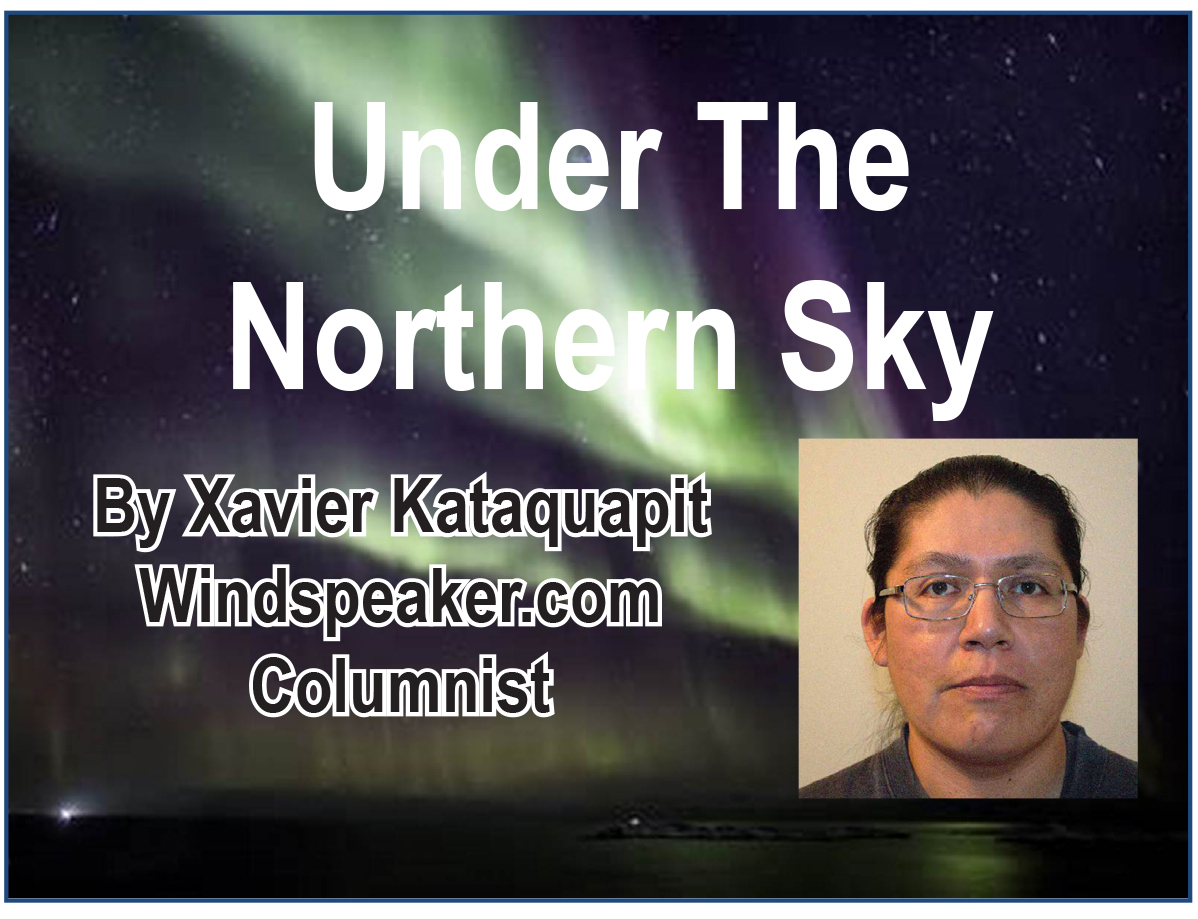
By Xavier Kataquapit
I sat out admiring the lake the other day on a warm summer afternoon. Although it was still four in the afternoon and the sun was not ready to set near the horizon for another five hours, I was in full view of a reddish orange globe hanging in the sky.
Forest fires from northwestern Ontario were filling the sky high into the atmosphere with smoke and pollutants from hundreds of blazes burning in the northern wilderness. The thin layer of smoke that rose in the air could be noticed by the fact that the sun took on a brilliant reddish hue.
Forest fires have always been a common occurrence in the north for as long as people have lived here. We Cree valued burned over areas along the James Bay coast because they were a source of dead dry wood that could be easily cut and collected for firewood in the winter. Most of these fires were small tracks of land that left charred trees that died where they stood as the bark burned and the branches and roots were singed.
Fires happen naturally with forests and, in many areas of the world, it is part of the life cycle of a forest to burn and die as it renews the landscape for new growth to occur. The difference with modern fires now is that they are growing in size and intensity and the research that many scientists point to is that this is mostly driven by our own human activity.
Climate scientists have warned us for decades that as the weather warms, it will bring a cascade of changes that will affect everything. More carbon in the atmosphere means temperatures rise worldwide and as the temperature rises, forests everywhere become more dry and more at risk of burning in ever larger fires, at earlier times and for longer periods.
There is even the rare phenomenon of what is known as ‘zombie fires’, fires that smolder for months underground and then reignite themselves again after the spring thaw. In an article by Science News, researchers report that as winters become milder and the summers become hotter, zombie fires could become more frequent.
As the environment and climate changes, we are starting to see a growing trend of larger, more intense and longer lasting fires that affect large swaths of land and put lives in danger. There is no denying that something is changing in our world.
During every recent summer, many Indigenous remote wilderness communities have had to be evacuated due to huge burning infernos. In 2019, the world saw the burning of bush fires in Australia. Shortly after, the news turned to the western U.S. in 2020 as major fires burned through Washington and Oregon. Now this past summer saw scorching heat waves affecting the interior of British Columbia to the point of launching a forest fire that destroyed the town of Lytton, BC.
The world seems to be in a state of denial and we all don’t really want to believe that our climate could change so much in such a short space of time that it could cause so much devastation. We like to think that these major forest fires might be a ‘one off’ season or just a freak of nature that won’t happen again for a long time. Unfortunately, the science and the research that so many professionals have pointed to all say the same thing, that global warming will cause more droughts and more forest fires as the world heats up.
As a matter of fact, the process of heat, fire and drought all work together to intensify one another. As the environment heats up, more drought occurs, as more drought occurs, forest and bush fires become more pronounced and as more fires happen, more carbon is released into the air to make the problems of global warming worse.
Many scientists and researchers have been warning us about this occurring for years and now they are telling world leaders that we are headed towards a climate emergency. They are demanding action.
As natural as fires may be for forests, the size and intensity of modern fires are a sign that we are driving the changes in our world. We all have to work together the world over to find solutions to manage fossil fuel use, create more environmentally friendly solutions to creating energy and to find ways to reduce our culture of sending so much carbon into our atmosphere.
If we could channel as much energy and resources into solutions as we do in trying to send people into space, we could do so much to save our environment and by extension save ourselves. Even in the midst of an historic pandemic we cannot ignore climate change and the impending danger to life on this planet.
